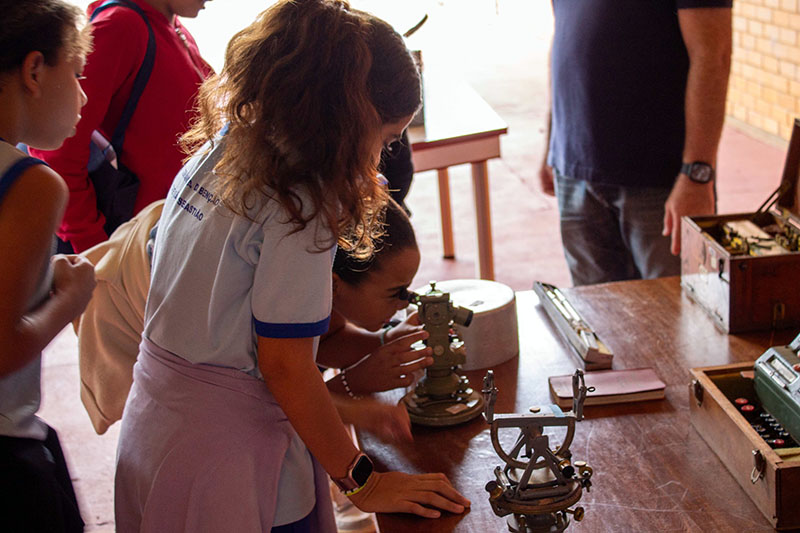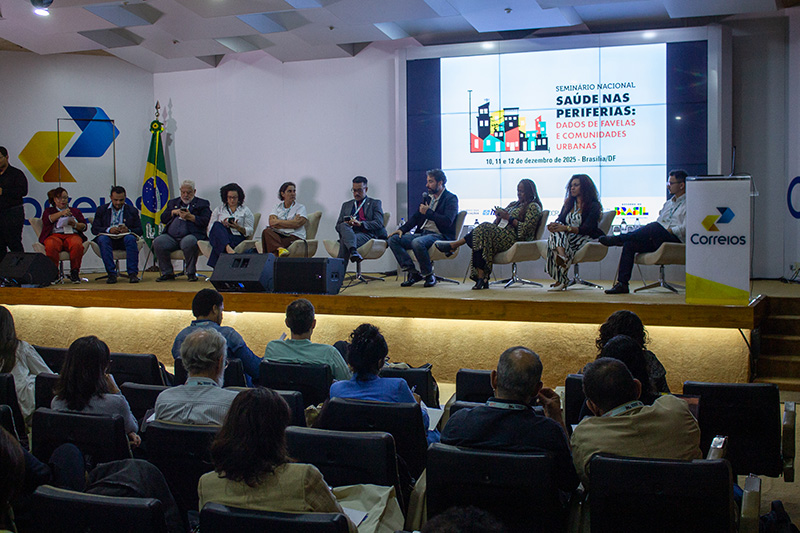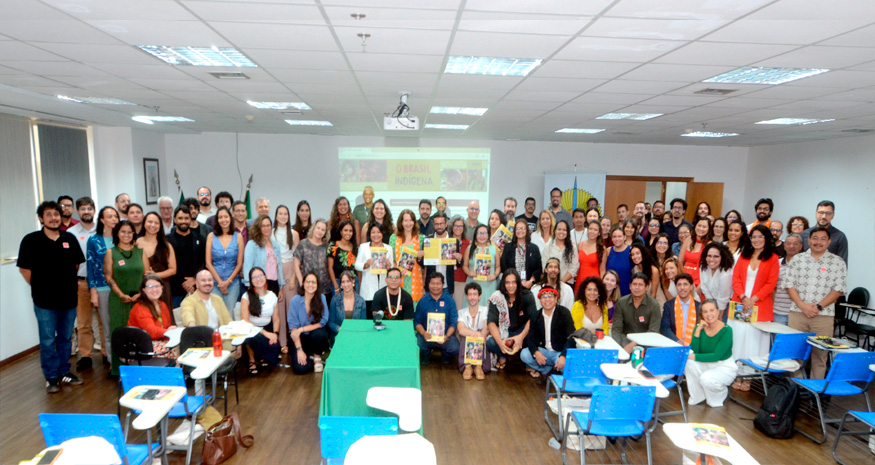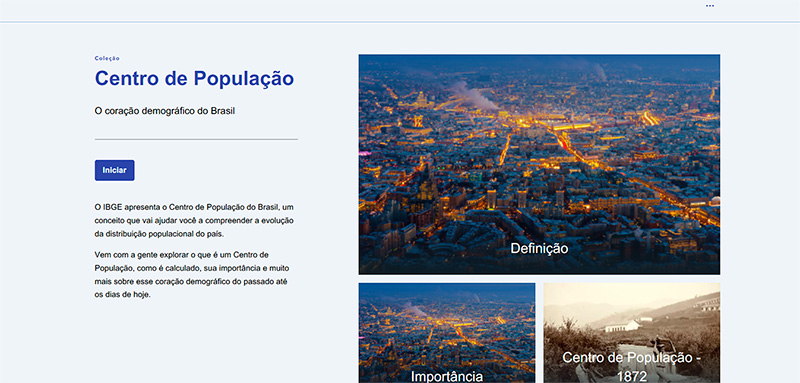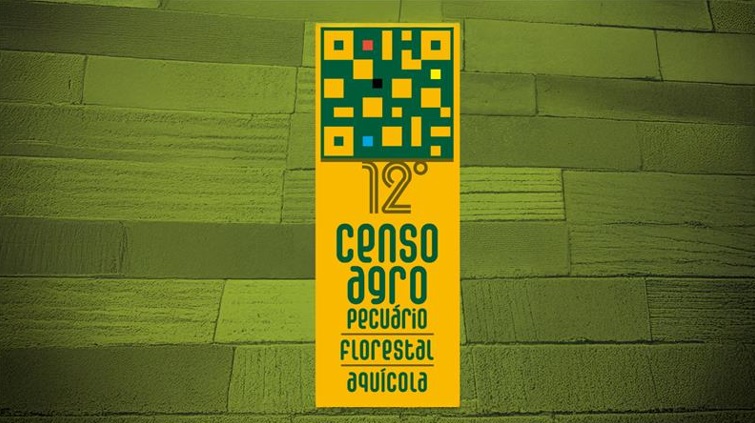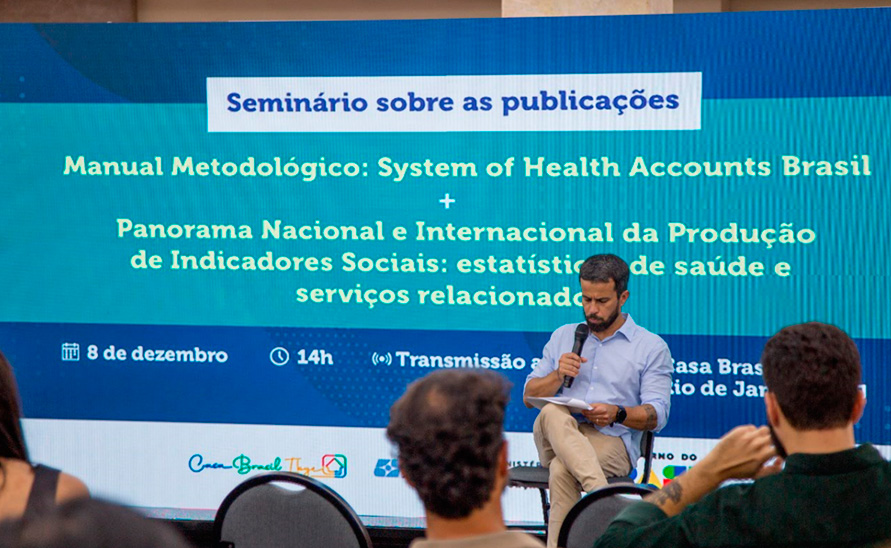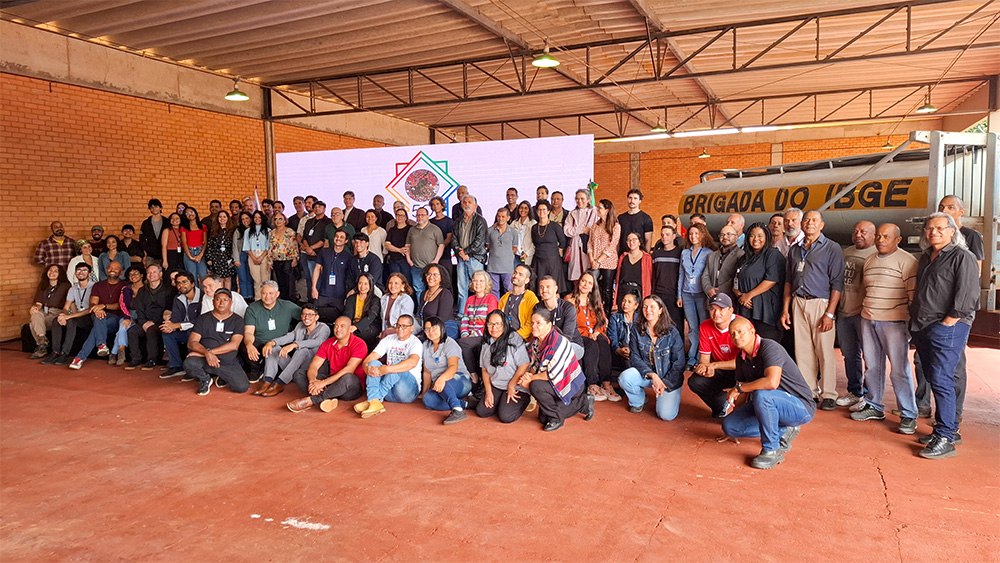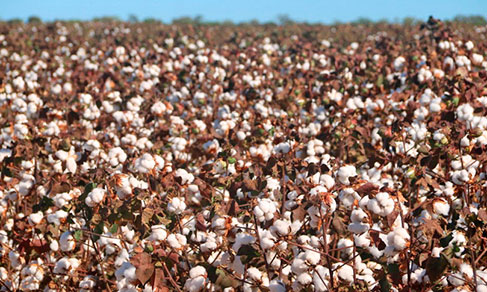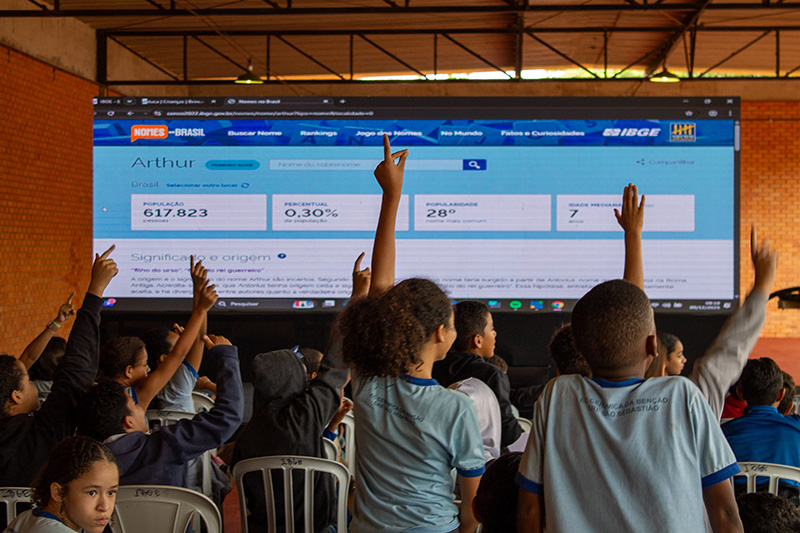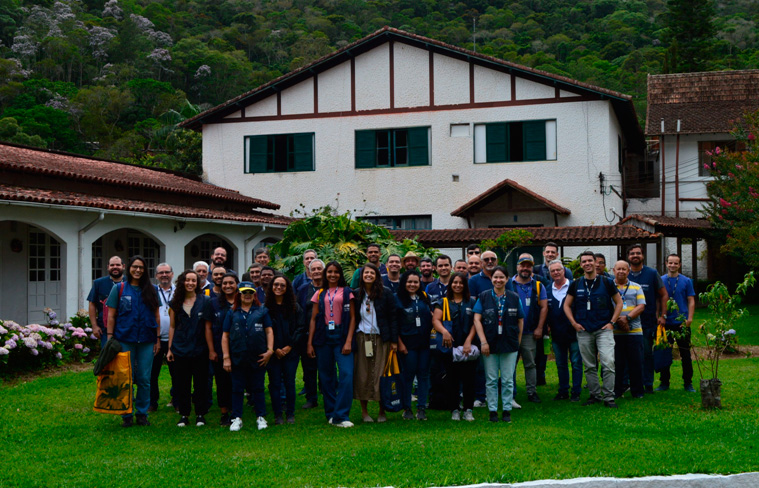2022 Census
2022 Census: proportion of population with complete higher education increases from 6.8% in 2000 to 18.4% in 2022
February 26, 2025 10h00 AM | Last Updated: February 27, 2025 04h03 PM
Highlights
- Between 2000 and 2022, the proportion of persons with complete higher education grew 2.7 times in the population aged 25 years and over: from 6.8% to 18.4%. In that period, the percentage of persons without any education or with incomplete primary education dropped from 63.2% to 35.2%.
- The proportion of the black population aged 25 years and over with complete higher education grew 5.8 times in the period, changing from 2.1% in 2000 to 11.7% in 2022. The brown population with that schooling level grew 5.2 times, changing from 2.4% in 2000 to 12.3% in 2022.
- The proportion of the white population aged 25 years and over with complete higher education grew 2.6 times in the period. Inequalities remain: that group changed from 9.9% in 2000 to 25.8% in 2022, a percentage twice that of black and brown persons.
- The population of color or race yellow has the highest percentage of persons with complete higher education (44.1%) and the lowest proportion of persons either without any education or with incomplete primary education (17.6%).
- Between 2000 and 2022, school attendance grew in the age groups up to 17 years. For children aged between 0 and 3 years, the gross school attendance rate jumped from 9.4% to 33.9%. In the range between 4 and 5 years, the attendance rose from 51.4% to 86.7%. In the group between 6 and 14 years, close to universalization, the rate changed from 93.1% to 98.3%. In the range between 15 and 17 years, the attendance rose from 77.4% to 85.3%.
- The only group to retreat the school attendance was that between 18 and 24 years: 31.3% in 2000 and 27.7% in 2022, due to the reduction of the parcel of these youngsters in secondary education or in previous levels.
- In 2022, schooling of women aged 25 years and over surpassed that of men. Among women, 20.7% had a complete higher education. Among men, that proportion was 15.8%.
- In 2022, the gross school attendance was 33.9% in the population aged between 0 and 3 years and 86.7% in the range between 4 and 5 years. Goal 1 of the National Education Plan (PNE) is a minimum attendance of 50% for children up to 3 years and 100% for children between 4 and 5 years.
- Among 5,570 Brazilian municipalities, in only 646 the gross school attendance rate of children aged between 0 and 3 years surpassed 50% (level established by Goal 1 of the PNE). In 325 Brazilian municipalities, that indicator was below 10%.
- Among persons graduated in Medicine in 2022, 75.5% were white persons, 19.1% were brown persons and 2.8% were black persons. Among persons graduated in Social Service, 47.2% were white persons, 40.2% were brown persons and 11.3% were black persons.

Between 2000 and 2022, the proportion of persons with complete higher education grew 2.7 times in the population aged 25 years and over: from 6.8% to 18.4%. In that period, the percentage of persons without any education or with incomplete primary education dropped from 63.2% to 35.2%. Moreover, the population in that age range with "Complete secondary education and incomplete higher education" level grew from 16.3% to 32.2% between 2000 and 2022, whereas persons with "Complete primary education and incomplete secondary education" changed from 12.8% to 14.0%.
The data are from the 2022 Population Census: Education: Preliminary Sample Results, released today (February 26) by the IBGE. The launching event will take place at 10 am at the Cultural Center of the Federal University of Rio Grande do Sul, located in Farroupilha neighborhood, in Porto Alegre (RS).
The release will also be streamed through Digital IBGE and IBGE´s social media. The results can be accessed on the IBGE portal and on platforms like SIDRA and Census Overview.
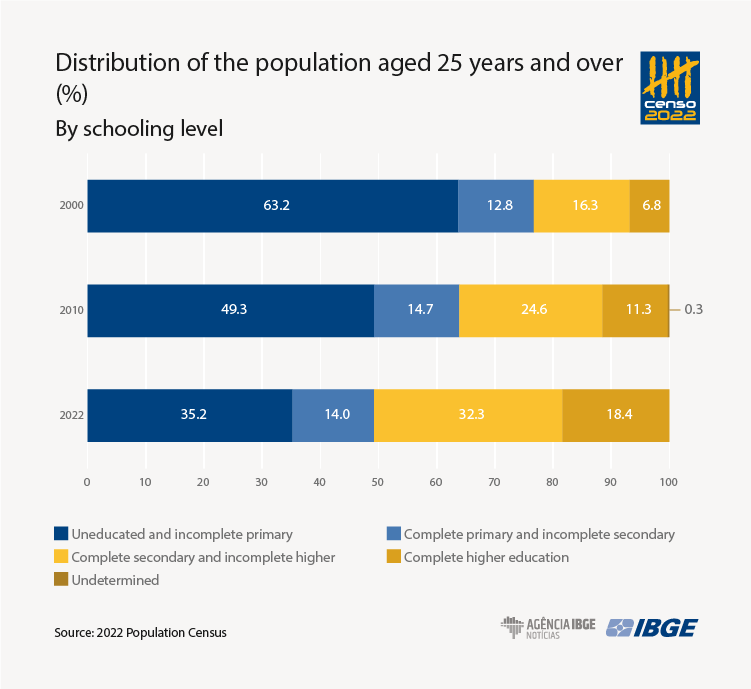
Between 2000 and 2022, proportion of black and brown persons with higher education became five times higher
"The comparison of the 2000 results with previous census operations shows that the increase in the proportion of persons with higher education occurred in every group of color or race," notes Bruno Perez, an analyst of this module of the 2022 Census. In 2000, the proportion of the white population aged 25 years and over with higher education (9.9%) was more than four times higher than that registered for the population of color or race brown (2.4%) and black (2.1%).
Between 2000 and 2022, those proportions rose 2.6 times for the white population (25.8%), 5.2 times for persons of color or race brown (12.3%) and 5.8 times for the black population (11.7%).

The proportion of persons with higher education is higher among the yellow population: 44.1% had complete higher education, whereas only 17.6% had an "Uneducated or incomplete primary education" level.
The highest percentage of persons aged 25 years and over either without any education or with incomplete primary education was among the black (40.5%) and brown (40.1%) populations. For the population of color or race white in the same age range, the proportion of persons either without any education or with incomplete primary education was 29.2%.
The population of indigenous color or race showed the lowest schooling level. Among persons of indigenous color or race aged 25 years and over, only 8.6% had complete higher education, whereas more than half (51.8%) were either uneducated or had only incomplete primary education.
Schooling level of women surpasses that of men
By disaggregating the information on schooling level by sex, it is noticed that women had, on average, a higher schooling level than men in 2022.
Among women aged 25 years and over, 20.7% had complete higher education, a proportion that was only 15.8% among men in the same age range. The proportion of the population aged 25 years and over either uneducated or with incomplete primary education was 37.3% among men and 33.4% among women.
Federal District has 37.0% of persons aged 25 years and over with complete higher education
In the population aged 25 years and over, the Federation Unit with the highest proportion of persons with complete higher education was the Federal District (37.0%) in 2022, well above the second in the ranking, São Paulo (23.3%). The lowest proportion was in Maranhão (11.1%). The two states were ranked in the same position in the 2000 Census, when the Federal District had 15.3% of its population aged 25 years and over with complete higher education, and Maranhão had 1.9%.
Among the Federation Units, Piauí had the highest proportion of persons aged 25 years and over either uneducated or with incomplete primary education in 2022, and the Federal District had the lowest one (19.2%).
In most Brazilian municipalities (3,008), more than half population had the schooling level "Uneducated or incomplete primary education." On the other hand, more than one quarter of the population aged 25 years and over had complete higher education in 75 municipalities.
Among the municipalities with more than 100 thousand inhabitants, São Caetano do Sul (SP) had the highest proportion of the population aged 25 years and over with complete higher education in 2022. Belford Roxo (RJ) had the lowest one (5.7%). Other municipalities in the outskirts of the Metropolitan Areas of capitals showed similar results, like Queimados (RJ) (7.4%), São João de Meriti (RJ) (7.2%), Santa Rita (PB) (7.1%), Francisco Morato (SP) (6.8%) and Maranguape (CE) (6.7%).
Yellow population has 12.2 years of schooling, the highest average
By disaggregating the average number of schooling years of the population aged 25 years and over by color or race, the yellow population stands out (12.2 years), followed by the white (10.5 years), brown (8.8 years), black (8.7 years) and indigenous (7.4 years) populations.
According to Bruno Perez, "the advantage of the white population in relation to the black and brown populations concerning the average number of schooling years repeated in all the Major Regions, all the Federation Units and in 150 municipalities with a large population."
| Average number of schooling years of persons aged 11 years and over, according to age groups, sex and color or race | |||||
|---|---|---|---|---|---|
| Municipality | Color or race | ||||
| White | Black | Yellow | Brown | Indigenous | |
| Brazil | 10.5 | 8.7 | 12.2 | 8.8 | 7.4 |
| São Paulo (SP) | 12.0 | 10.3 | 13.2 | 9.9 | 10.6 |
| Rio de Janeiro (RJ) | 12.3 | 10.2 | 12.5 | 10.4 | 11.2 |
| Brasília (DF) | 12.8 | 10.8 | 13.6 | 11.3 | 10.0 |
| Fortaleza (CE) | 11.4 | 9.2 | 11.1 | 9.9 | 9.8 |
| Salvador (BA) | 12.6 | 10.0 | 12.0 | 10.7 | 10.9 |
| Belo Horizonte (MG) | 12.7 | 10.1 | 12.5 | 10.7 | 10.4 |
| Manaus (AM) | 11.5 | 9.9 | 13.3 | 10.6 | 9.5 |
| Curitiba (PR) | 12.4 | 10.9 | 13.6 | 10.7 | 10.6 |
| Recife (PE) | 12.3 | 9.7 | 11.6 | 10.3 | 10.1 |
| Goiânia (GO) | 12.1 | 10.1 | 12.9 | 10.8 | 10.3 |
| Porto Alegre (RS) | 12.4 | 10.0 | 13.9 | 10.1 | 9.6 |
| Belém (PA) | 12.0 | 10.3 | 13.3 | 10.7 | 9.8 |
| Guarulhos (SP) | 11.0 | 9.7 | 12.0 | 9.6 | 9.9 |
| Campinas (SP) | 12.0 | 10.2 | 13.1 | 9.8 | 9.9 |
| São Luís (MA) | 12.0 | 10.7 | 11.6 | 10.8 | 10.6 |
| Maceió (AL) | 11.1 | 9.0 | 9.7 | 9.6 | 8.3 |
| Campo Grande (MS) | 11.6 | 9.8 | 12.6 | 10.1 | 8.8 |
| São Gonçalo (RJ) | 10.4 | 9.2 | 10.8 | 9.5 | 8.9 |
| Teresina (PI) | 11.9 | 9.5 | 9.2 | 10.3 | 7.6 |
| João Pessoa (PB) | 12.0 | 9.7 | 13.2 | 10.5 | 9.1 |
The number of schooling years is calculated through the information of the grade and level the person was attending or had completed. Nine schooling years are considered for the complete preliminary education; 12 schooling year for complete secondary education; and 16 schooling year for complete higher education. Master PhD and higher education specialization do not add schooling years in the methodology adopted, i.e., 16 years is the maximum value.
São Caetano do Sul (SP) has the highest average of schooling years (12.7)
In Brazil, the average number of schooling years of the population aged 25 years and over was 9.6 years in 2022. Among the Federation Units, the extreme points were the Federal District (11.8 years) and Piauí (7.9 years). Concerning the municipalities with more than 100 thousand inhabitants, the highest value was registered in São Caetano do Sul (SP), 12.7 years, and the lowest one in Breves (PA), 6.5 years.
São Caetano do Sul (SP), Niterói (RJ), Florianópolis (SC), Vitória (ES), Balneário Camboriú (SC) and Santos (SP) had averages above 12 schooling years for the population aged 25 years and over. In 2022, the average schooling years in the same age group was lower than five years in 40 Brazilian municipalities, being 30 of them in the Northeast.
School attendance is below the PNE goal in the ranges between 0 and 3 and 4 and 5 years
The 2022 Census found out that the gross school attendance rate was 33.9% in the Brazilian population aged between 0 and 3 years. Among persons between 4 and 5 years, the rate was 86.7% in 2022. Among persons between 6 and 14 years, this indicator was 98.3%, whereas it was 85.3% in the range between 15 and 17 years. In the range between 18 and 24 years, the gross school attendance rate was 27.7%. Lastly, the gross school attendance rate was 6.1% among persons aged 25 years and over.
Analyst Juliana Queiroz reminds that "goal 1 of the PNE establishes as targets the universalization of child education in the preschool for children aged between 4 and 5 years, as well as the improved provision of child education in nurseries so as to attend, at minimum, 50% of children aged up to 3 years."
Between 2000 and 2022, attendance to school or nursery grows in nearly all the age ranges
Between the 2000 and 2022 census operations, school or nursery attendance grew in the age range up to 17 years. The most significant changes were recorded in the younger groups: among children aged between 0 and 3 years, the gross school attendance rate advanced 24.5 percentage points, changing from 9.4% to the previously mentioned 33.9%.
The rise was of 35.3 percentage points (from 51.4% to 86.7%) in the range between 4 and 5 years. The advance was smaller in the subsequent age ranges. In the group aged between 6 and 14 years, in which schooling was relatively closer to universalization, the rise was of 5.2 percentage points, whereas it was 7.6 percentage points in the range between 15 and 17 years.
Unlike younger age groups, the gross school attendance rate reduced 0.7 percentage points in the age group between 18 and 24 years between 2000 and 2010, and then more 2.9 points between 2010 and 2022. According to Juliana Queiroz, "that result is due to the reduction in the parcel of youngsters in that age range attending secondary school or previous levels."

Piauí leads and Amapá has the lowest school attendance rate in the range between 4 and 5 years
The comparison between Federation Units shows a large gap in the attendance to schools and nurseries. Among the population aged between 0 and 3 years, the highest school or nursery attendance was in São Paulo (49.2%). In the subsequent age range, between 4 and 5 years, the highest gross school attendance rate was in Piauí (94.6%). The Federal District registered the highest gross school attendance rates in the range between 6 and 14 years (99.0%), as well as in the groups between 15 and 17 years (89.5%) and between 18 and 24 years (36.8%).
Among the Federation Units, the lowest gross school attendance rates were found in Amapá, for the ranges between 0 and 3 years and between 4 and 5 years (12.0% and 65.0%, respectively). Roraima recorded the lowest rates for the groups between 6 and 14 years (91.5%), between 15 and 17 years (78.8%) and between 18 and 24 years (24.0%).
Queiroz notes that "in only 646 out of 5,570 Brazilian municipalities, the gross school attendance rate of children aged between 0 and 3 years surpassed 50%, which is the level established in goal 1 of the National Education Plan. Moreover, that indicator was below 10% in 325 municipalities, including 31 municipalities in which no child aged between 0 and 3 years attended either schools or nurseries.
Among the municipalities with more than 100 thousand inhabitants in 2022, São Caetano do Sul (SP) reported the highest gross school attendance rate both in the age range between 4 and 5 years (97.8%) and between 18 and 24 years (49.8%).
In 2022, Brazil had 2.5 million with a degree in Law
In 2022, Brazil had 2,467,521 persons with a degree in Law and 553,538 persons with a degree in Medicine.
In 2022, the Federal District registered one person graduated in Medicine for every 186.9 residents. On the other hand, Maranhão had 921.7 residents for each person graduated in Medicine. Those were the extreme points among the Federation Units.
Among those graduated in Medicine, 75.5% were white persons
The distribution of the population with complete higher education by color or race is quite different between different areas of the undergraduate courses. For instance, 75.5% of the persons graduated in Medicine were white persons.
Among those graduated in Social Service, the proportion of white persons was 47.2% in 2022. Those were, respectively, the highest and the lowest values among 40 detailed areas that mostly occurred in 2022.
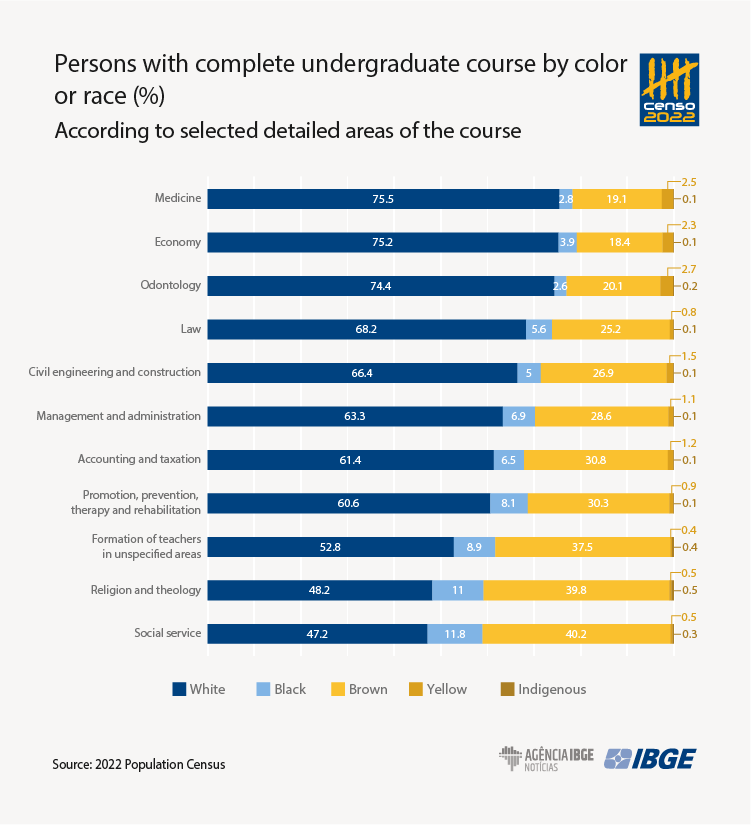
Women prevail in the areas of Social Service and Nursing
The area of Social Service recorded the biggest participation of women, taking into account 40 detailed areas that mostly occurred. In 2022, 93.0% of persons graduated in Social Service were women.
Women also registered a significant share among persons graduated in areas like Nursing (86.3%) and Formation of teachers in unspecific areas (92.8%). In contrast, only 7.4% of the persons graduated in Mechanical Engineering and Basic Metals were women.
More about the survey
This release of the 2022 Census brings the preliminary sample results on Education, with indicators on school or nursery attendance, schooling level attended, schooling level of the population, average years of study and area of the undergraduate course completed.


